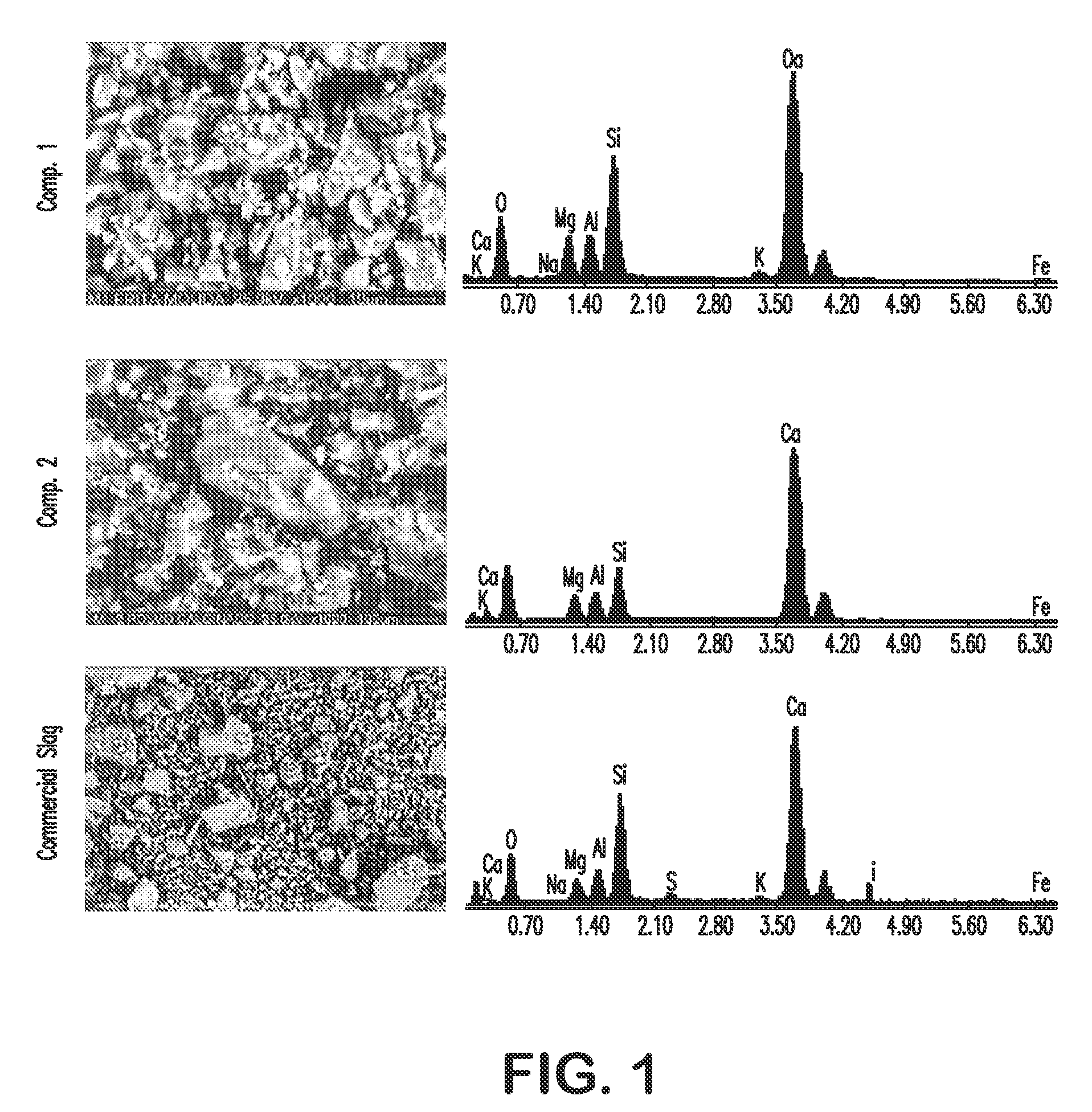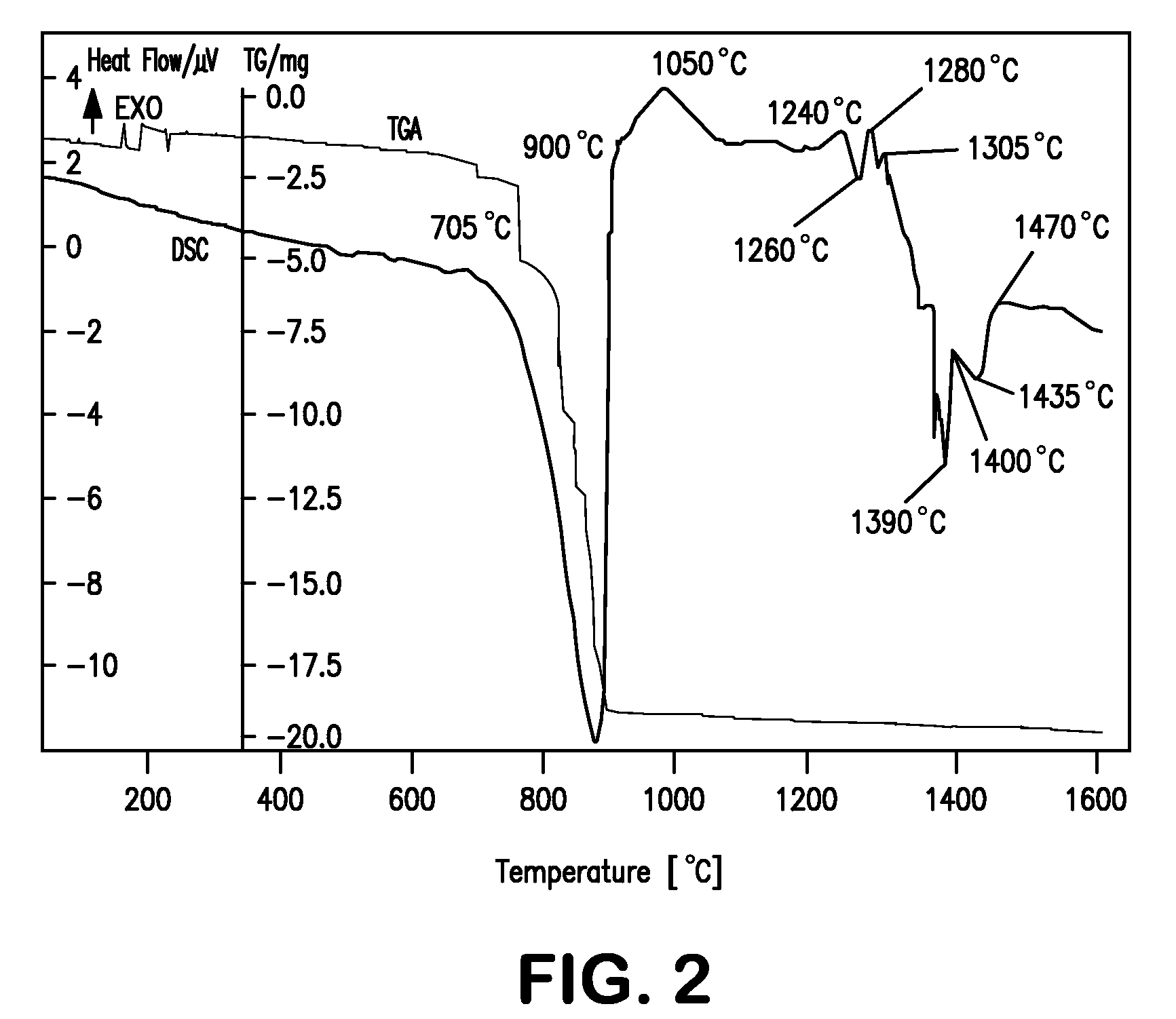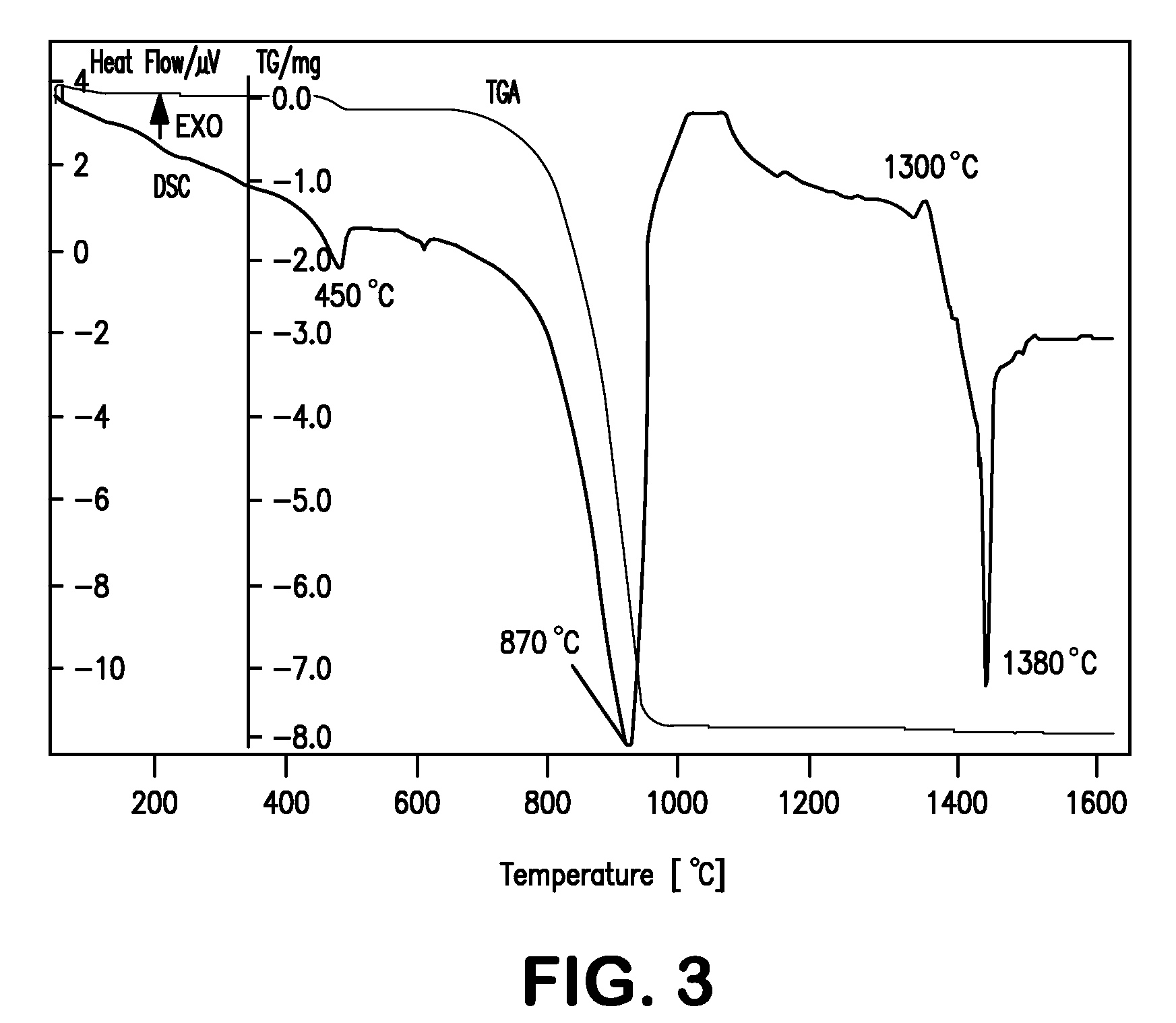Homogenous synthetic mud-to-cement cementing glasses
a technology of cementing glasses and synthetic mud, which is applied in the direction of earthwork drilling, sealing/packing, and well accessories, etc., can solve the problems of increasing operation costs, high thermal degradation of conventional portland cement and also water based drilling fluids mixed with portland cement, and difficult to measure the exact chemical composition of slag, etc., to achieve better chemical and physical properties
- Summary
- Abstract
- Description
- Claims
- Application Information
AI Technical Summary
Benefits of technology
Problems solved by technology
Method used
Image
Examples
example 1
[0070]Exact ratios of the differing raw materials previously characterized by SEM and EDS in Table 1 are mixed to obtain Composition 1 with 42.31% w / w CaO, 10.25% w / w MgO, 32.34% w / w SiO2, 12.20% w / w Al2O3, 1.30% w / w Fe2O3, 1.60% w / w Na2O+K2O. The homogenous mixture is melted in a platinum crucible at 1500° C. for 3 hours. The liquid is then quenched in water at 20° C. to suppress crystallization. The synthetic glass is then milled to a controlled particle size of less than 45 μm.
example 2
[0071]Exact ratios of the differing raw materials previously characterized by SEM and EDS in Table 1 are mixed to obtain Composition 2 with 40.60% w / w CaO, 10.45% w / w MgO, 37.10% w / w SiO2, 9.85% w / w Al2O3, 1.00% w / w Fe2O3, 1.00% w / w Na2O+K2O. The homogenous mixture is melted in a platinum crucible at 1500° C. for 3 hours. The liquid is then quenched in water at 20° C. to suppress crystallization. The synthetic glass is then milled to a controlled particle size of less than 45 μm.
example 3
[0072]Synthetic glass Composition 1 and / or Composition 2 prepared by the methods detailed in Examples 1 or 2 above are mixed with a liquid phase that could be used for the construction of steam injection wells. Examples of liquid phases include oil based drilling fluids and water based drilling fluids. Preferably the liquid phase is a water based drilling fluid, such as water-based muds, fresh water mud, sea water mud, salt mud, brine mud, lime mud, gypsum mud and oil-in-water emulsions. The mixture forms a slurry that is activated by reaction with a high pH solution, such as caustic soda and soda ash. In order to prevent strength retrogression, other compounds such as antifoam, silica flour and additional cementing materials are added to the slurry. These additional cementing materials may include any additives that are used to control cement properties, i.e. mechanical properties, thermal properties or chemical resistance to H2S or CO2. Examples of additional cementing materials a...
PUM
| Property | Measurement | Unit |
|---|---|---|
| density | aaaaa | aaaaa |
| melting temperature | aaaaa | aaaaa |
| melting temperature | aaaaa | aaaaa |
Abstract
Description
Claims
Application Information
 Login to View More
Login to View More - R&D
- Intellectual Property
- Life Sciences
- Materials
- Tech Scout
- Unparalleled Data Quality
- Higher Quality Content
- 60% Fewer Hallucinations
Browse by: Latest US Patents, China's latest patents, Technical Efficacy Thesaurus, Application Domain, Technology Topic, Popular Technical Reports.
© 2025 PatSnap. All rights reserved.Legal|Privacy policy|Modern Slavery Act Transparency Statement|Sitemap|About US| Contact US: help@patsnap.com



